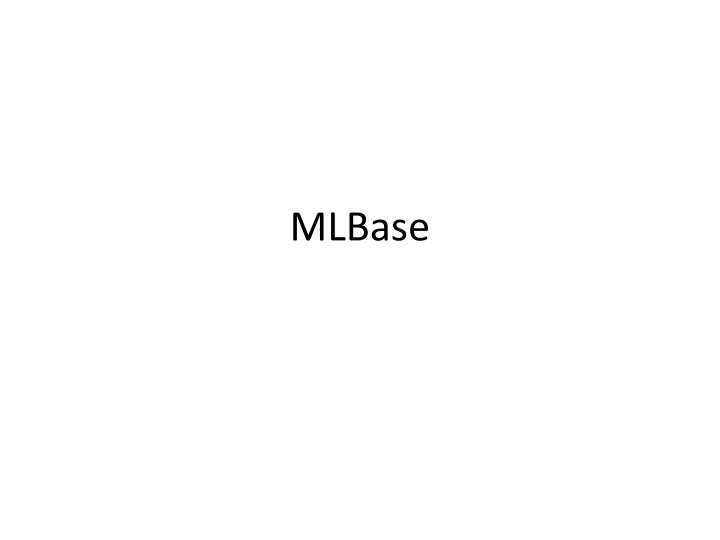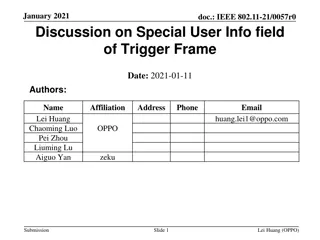
Enhancing Interactive Machine Learning Processes
Explore the potential of optimizing machine learning iterations by letting the system handle parameter combinations and algorithm selections. Discover the utility, limitations, and potential improvements for interactive ML models.
Download Presentation

Please find below an Image/Link to download the presentation.
The content on the website is provided AS IS for your information and personal use only. It may not be sold, licensed, or shared on other websites without obtaining consent from the author. If you encounter any issues during the download, it is possible that the publisher has removed the file from their server.
You are allowed to download the files provided on this website for personal or commercial use, subject to the condition that they are used lawfully. All files are the property of their respective owners.
The content on the website is provided AS IS for your information and personal use only. It may not be sold, licensed, or shared on other websites without obtaining consent from the author.
E N D
Presentation Transcript
Impressions Paper has an interesting premise Trying out many combinations of Parameters Sampling rates Algorithms is a pain; can we optimize that process? Can we let the system do the iteration for us? Users: dumb users of ML, or quick and dirty users of ML. Vision paper, not fully built/tested Subsequent papers detail a more complete implementation
Utility? How useful do you think a system like this can be? What are things it s good at? What are factors limiting utility?
Utility? How useful do you think a system like this can be? What are things it s good at? What are factors limiting utility? Limitations: Cannot try out fancy new algorithms Harder ML tasks are not easy to do Text, graph analytics are not trivial Do you really care about utility of interactive ML model or the eventual ML model that is learned? Where does the data come from?
Feature Engineering Paper ignores feature engineering Very time-consuming step Where does the data come from? Is it a program? Thoughts? Is this a big limitation or a small one? Can we generate features via UDFs?
Other Issues Dimensionality Reduction Also not inbuilt into the system. Necessary for many machine learning tasks Data loading could be time consuming Why not analyze/do ML in-situ where the data is generated?
Other ideas to make it more useful? How about maintaining models about models? Keep statistics as to how much different parameters and methods help you and improve your estimates over time to help query optimization Other prediction mechanisms? Regression, clustering,




















